Michigan vegetable crop report – August 18, 2023
Cover crop fertility and late summer disease and insect vigilance.
Weather
Watch Jeff Andresen’s weather update here.
Weed of the week
Perennial sowthistle (Sonchus arvensis) is a perennial weed in the Sunflower family. This weed is a dandelion look-alike in terms of leaf shape and flower appearance. However, perennial sowthistle gets to be much taller, has leaves growing all the way up the stalk in addition to the rosette leaves and contains multiple flowers per head. The plant propagates by both seed and underground creeping roots from which new shoots grow. Seeds have little dormancy, short persistence in the soil, and are naturally evolved to move by the wind or by clinging to animal fur.
Use tillage to cut up the storage roots in order to weaken the plant and then keep above-ground growth in check to prevent the storage roots from being replenished. Repeat cultivation or mowing in the spring when most seedlings/new shoots are emerging also weakens the storage roots. Systemic herbicides labeled for control of perennial sowthistle include Stinger (clopyralid) and other HRAC 4 products containing 2,4-D or picloram.
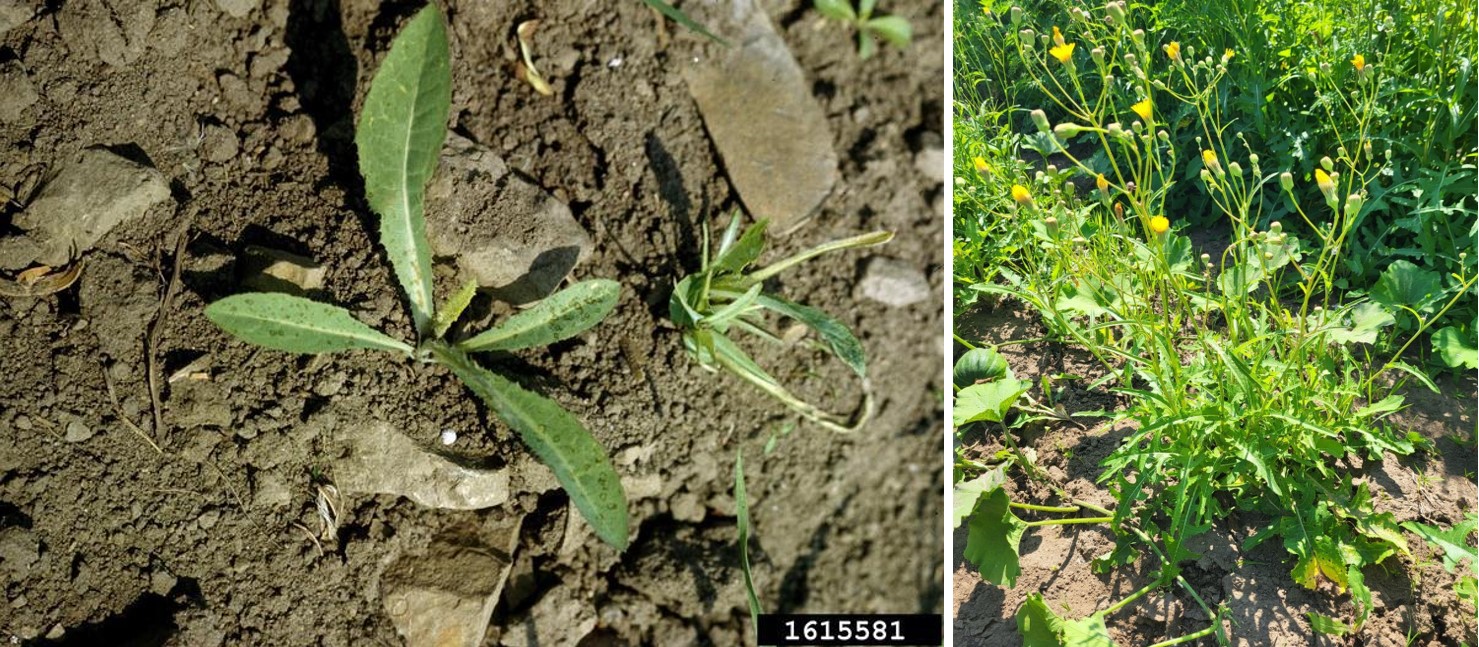
Cover crop considerations: fertilizing covers
Now is a good time to get late summer/fall cover crops in the ground following earlier vegetables or wheat. A good, well-managed cover crop can protect otherwise bare soil from erosion, scavenge residual nutrients, and add organic matter to the soil while competing with weeds.
Many services provided by cover crops are tied to biomass production. The Midwest Cover Crop Council selector tool and information pages are great resources for identifying the species, planting dates, seeding rates and management practices appropriate for your situation. Some well-performing winter-killed options include mustards, radishes and oats. Common winter-annual (overwintering) covers include grasses like cereal rye and legumes like hairy vetch and various clovers. Make sure to consider your rotational crops for compatibility.
Cover cropping is an investment (of dollars, time and attention), and smart selection and managing covers can maximize the chances your investment will pay off. One often overlooked consideration is ensuring adequate fertility for cover crop growth, especially on sandy or otherwise low fertility soils. Modest applications of nitrogen fertilizer (30-50 pounds per acre) may go a long way towards improving the performance of non-legume cover crops, but whether it’s beneficial will depend on the situation.
Check out these articles from the Hayden Lab at MSU exploring when fertilizing cover crops may make sense and the potential benefits of combining cover crops with fall manure applications.
Not surprisingly, when available soil nitrogen is low, non-legume cover crops are more likely to benefit from nitrogen fertilizer, especially for high demand covers like those in the brassica family (mustards and radishes, for example). While this will be most common on low fertility mineral soils, an interesting experiment on a high organic matter muck soil demonstrated how the response to nitrogen fertilizer increased where wetter areas of the field limited available nitrogen and cover crop growth (see photo below).
Fertilizing your cover crops is one more cost, but considering the cover crop species, likely fertility of the soil, and your goals can help you decide whether it may be worthwhile insurance to make sure your cover crops have the chance to do the most good.
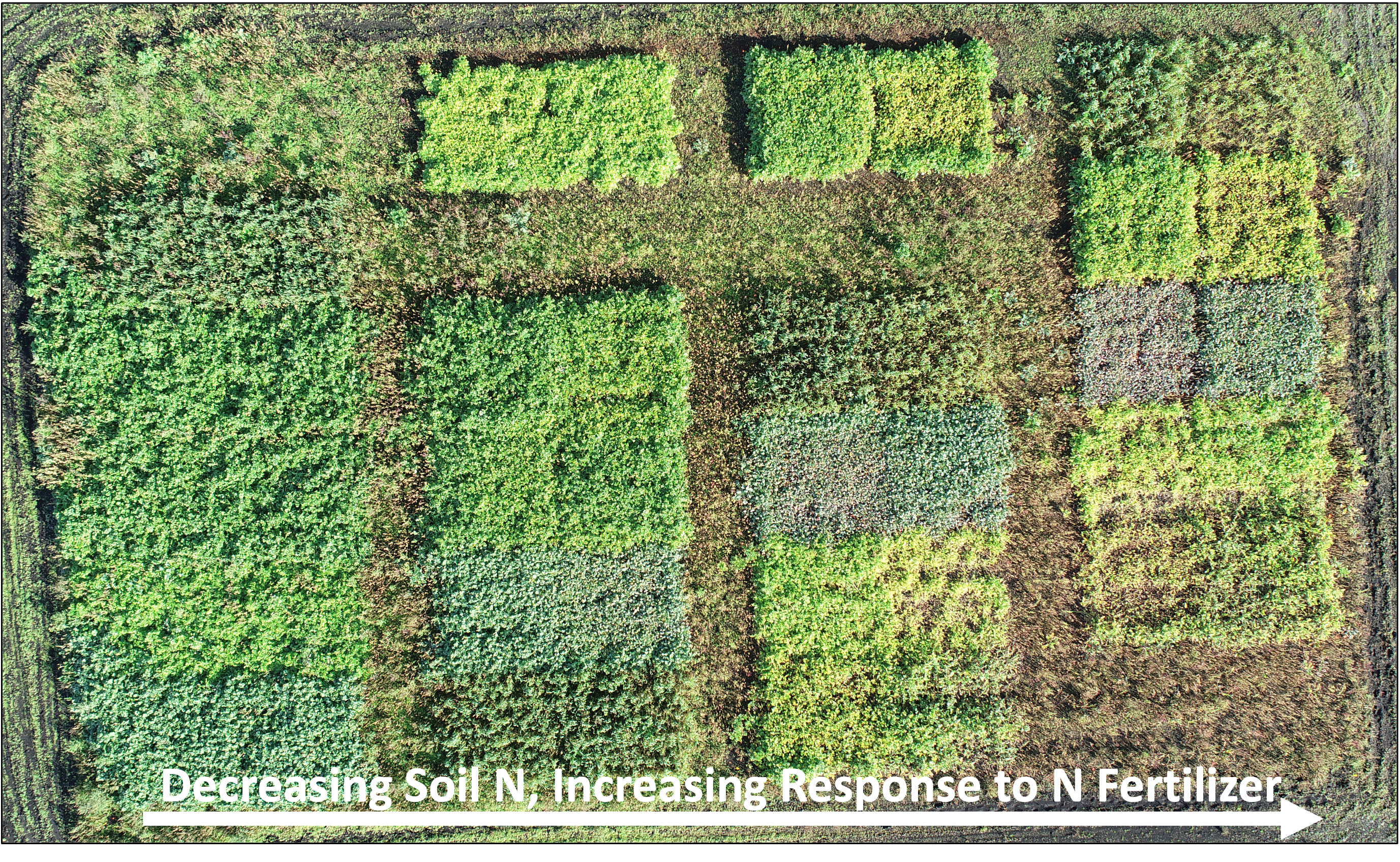
2023 MSU Extension Southeast Michigan Farmer Survey
MSU Extension is pleased to announce our 2023 Southeast Michigan Farmer Needs Assessment Survey. This survey will gather information about your farm and your potential interest in learning more about various farm-related topics. The information gathered will inform future programs and educational opportunities offered by MSU Extension educators for agricultural producers in southeast Michigan. This survey will take approximately 10 minutes to complete and is accessible at the link below:
Take the 2023 MSU Extension Southeast Michigan Farmer Needs Assessment Survey!
Feel free to share the survey link with other growers. We welcome any participation in the survey in order to help Michigan State University Extension better serve its communities.
QuickBooks survey
QuickBooks is one of the most widely used financial software packages for farm financial records. It is a powerful tool but using it effectively for farm businesses can be confusing. MSU Extension is partnering with the University of Wisconsin and University of Nebraska to develop educational resources for using QuickBooks for farm records effectively and efficiently. It would be greatly appreciated if you would complete a short survey that will help us better understand what is desired for QuickBooks educational programming.
Crop updates
Asparagus
Between five and 10 disease severity values (DSV) accumulated between July 29 and Aug. 4 in seven Oceana County asparagus fields MSU Extension is monitoring. Based on DSVs at these locations, a fungicide application would have been due Monday, Aug. 14, if nothing had been applied since about the first week of August. Read more about purple spot control in our June 14 report.
Carrots and celery
Scouts have reported celery leaf tier caterpillars are present in some locations, though populations are still low. This pest stays up top in moderate weather but can go down into hearts to cause issues with sustained, hot temperatures.
Aster leafhoppers are slowing down in both carrots and celery. Foliar disease prevention is an important focus. For carrots, read this past report about foliar disease control.
Cucurbits/pickles
Cucurbit downy mildew has been confirmed in 11 counties to date: Saginaw, Monroe, Washtenaw, Ingham, Branch, Arenac, Bay, Berrien, Allegan and Ottawa. As of Aug. 9, all of the spores in traps have been all clade-2, which infects cucumbers, pickles and melons (but not squash and pumpkin). See this report for details on fungicides. Track movement of spores and learn about identification of this disease at MSU Downy Mildew News. In northern Ohio, clade-1 has been reported on pumpkins.
What do yellow leaves in cucurbits mean? Both the authors and observant consultants and growers have wondered about this in past and present. Check out this helpful article on yellow leaves on pumpkins from Purdue University. Short version: Seeing marginal yellowing on older squash and pumpkin leaves is not always a problem. Looking at the pattern within the plant and field can provide clues.
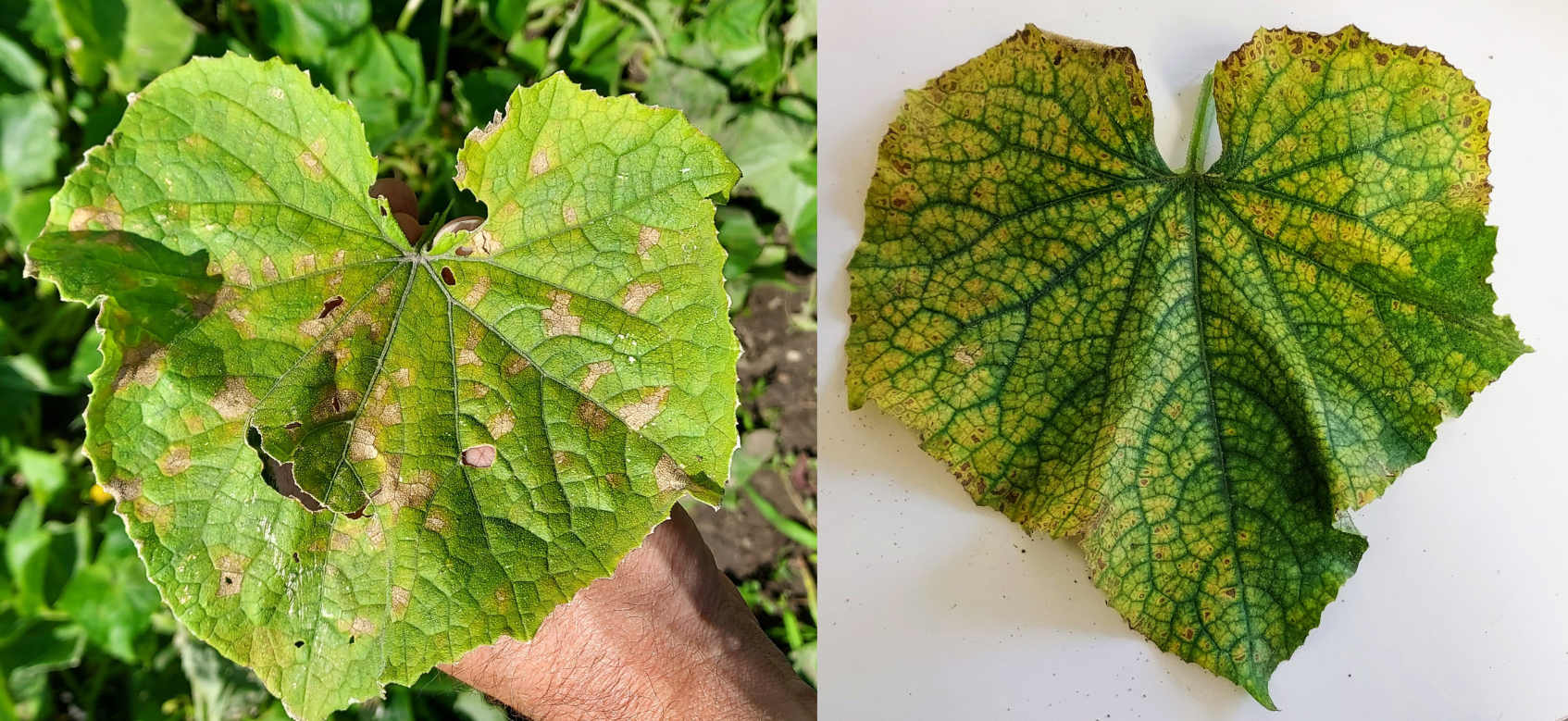
Phytophthora is likely going to make its presence more known in areas that previously had not gotten heavier rains. Detect and disk under plants and fruit dying from this disease, plus a firewall of healthy plants. Managing this disease takes an “all in,” no holds barred approach.
Deer feeding on cucurbits and other crops has been severe this year. Fencing remains the gold standard for preventing wildlife damage but can be costly to implement depending on the type. A relatively effective and low-cost solution is putting up an electric 3D fence, which uses a deer’s inferior depth perception against it. You can also include scent caps fastened to the hot wire so they are also electrified in order to attract the animal to the electric fence and further train it to avoid the area.
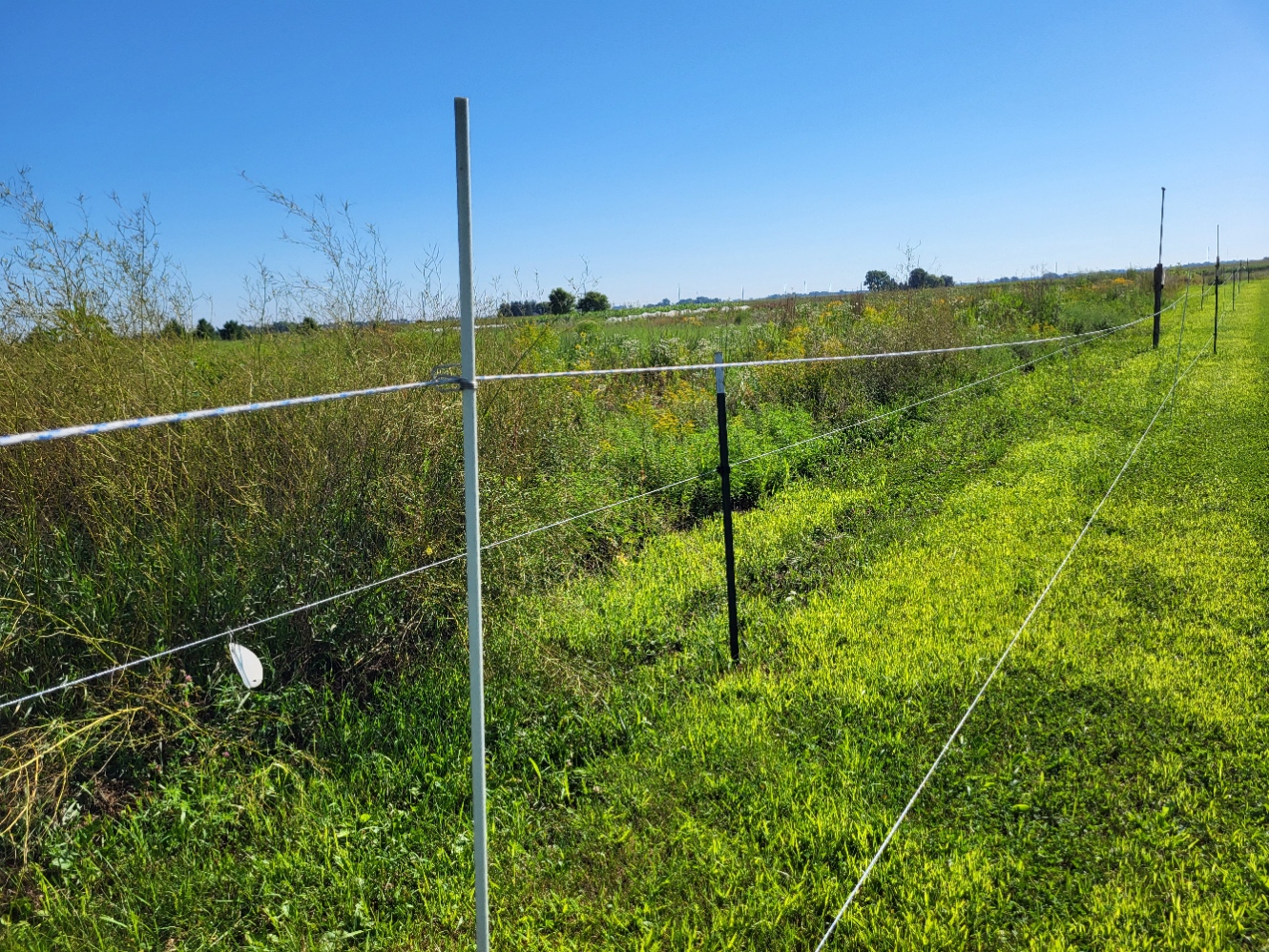
Fruiting vegetables
The fruits of past sticky, dewy weather were apparent this week, with early blight developing on some potatoes. While potato is not a fruiting vegetable, it is a good sign that conditions were right for this foliar disease, which also infects tomato.
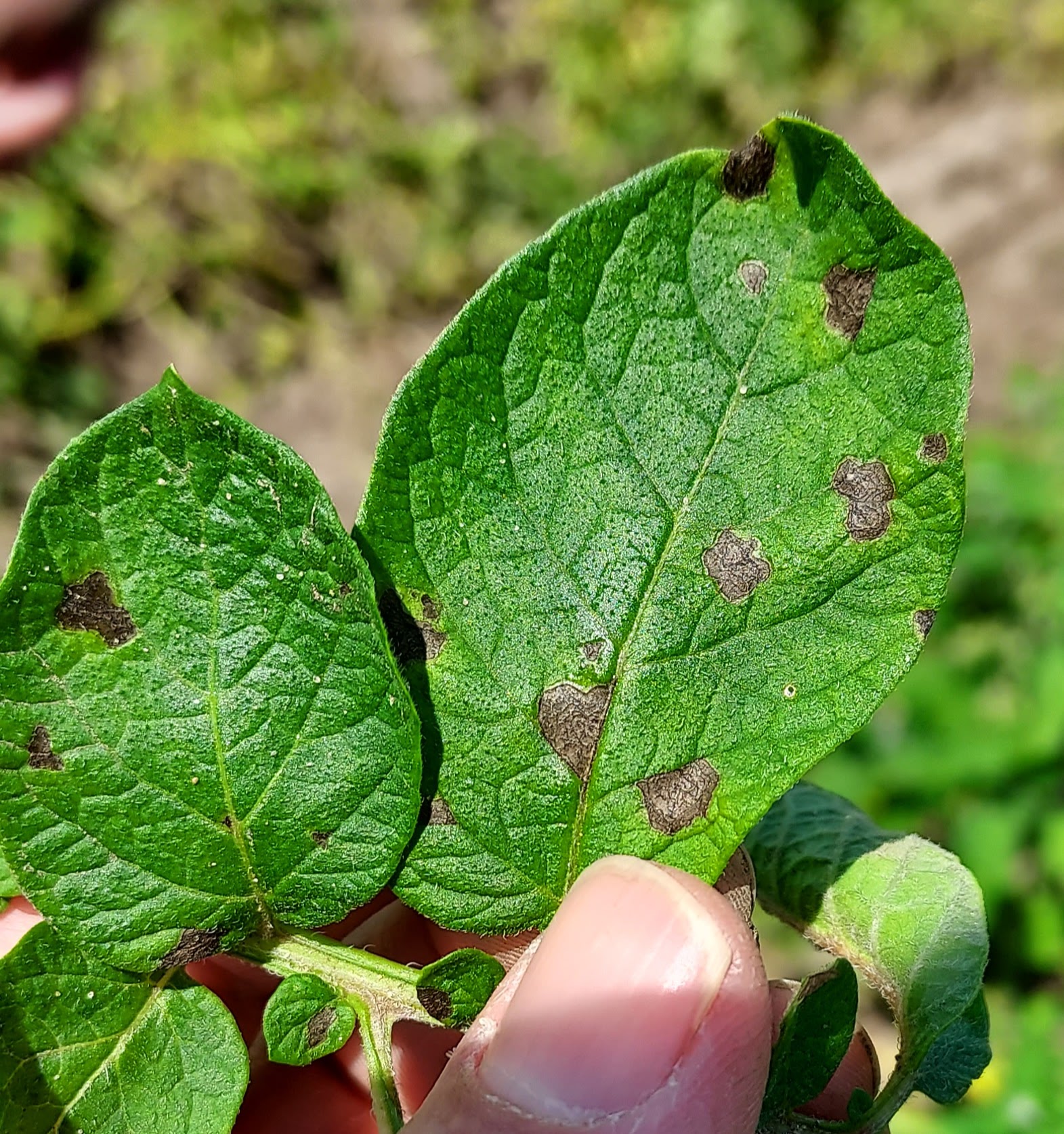
Symptoms of bacterial disease have also been visible on some farms. The frustrating triad of bacterial canker, spot and speck are best worked on in the greenhouse, where one infected plant in a tomato tray can infect its closely packed neighbors. Read more in “Protect greenhouse tomato transplants from bacterial spot.”
Onions
Growers have observed that Movento did not have as much momentum as expected this year. It’s hard to pinpoint the cause, but here are a few things research has shown: (1) Movento is less effective on adult versus larval thrips, (2) using a good rate of a penetrating surfactant is critical and (3) tank-mixing Movento with chlorothalonil fungicide reduces efficacy.
Michigan growers know about possibility 2 and 3, so what about larvae versus adults? This spring saw a historic combination of hot and dry weather. Hot weather can speed up thrips development, lessening the time from egg to adult. Insects are cold blooded, so development is heavily dependent on temperatures, and rain causes thrips mortality. So, a possibility is that thrips moved to adulthood more quickly (Movento less effective) and/or that populations simply grew more quickly (if 10% of a large number survive, it is still a lot). Thankfully, things have slowed down thrips-wise as weather cooled, rainfall returned and onions matured. Scouting could be helpful in both cases.
Weather (cool, overcast) has been favorable for downy mildew pathogens. Read a past article on downy mildew in onions. Note: Omega carries downy mildew on its label, and is also helpful for Stemphylium.
Sweet corn
According to Insect Forecast, weather was favorable for transport of earworm moths from southern climes to Michigan on Aug. 13 and 16. What did traps say? After lots of 0s through this Monday (Aug. 14), frisky corn earworm moths were present this Wednesday/Thursday in MSU and scout traps in west central Michigan. The traps weren’t flying away with moths, but they were present. Weather may be favorable for an additional flight of earworm tomorrow.
To our south, all Purdue University trap sites are now catching corn earworm each evening, with very high captures in some locations. Information from Ohio can be accessed at “Lep Monitoring Network Update #15 – WBC Numbers for Northeastern Counties Remain High.” Pressure may also increase in sweet corn as field corn silks turn brown, so it is a good time of year to keep an eye on traps.
A spray interval of five days may suffice when captures in a steel trap are less than five per night. A two to three interval could provide better protection if and when captures approach 50 per night. See more information on interpreting captures from cloth traps.
|
Corn earworm captures. Total in trap for week1 (avg # per night2) |
|||||
|---|---|---|---|---|---|
|
Week |
Ottawa County |
Oceana County |
Monroe County |
Wayne County |
Berrien County |
|
8/16 |
3 (<1) |
6 (2) |
0 (0) |
- |
- |
|
8/9 |
0 (0) |
0 (0) |
0 (0) |
0 (0) |
0 (0) |
|
7/31 |
0 (0) |
0 (0) |
0 |
0 |
1 (<1) |
|
7/24 |
2 (<1) |
1 (<1) |
0 |
1 (<1) |
1 (<1) |
|
7/17 |
0 (0) |
0 (0) |
0 (0) |
1 (<1) |
- |
|
7/10 |
- |
0 (0) |
0 (0) |
0 (0) |
- |
|
7/3 |
- |
0 (0) |
3 (<1) |
0 (0) |
- |
|
1Total number collected since last trap check; 2The total number divided by the number of nights since the last trap check |
|||||
Western bean cutworm captures were lower at two locations MSU is monitoring. In both locations, corn had passed the pre-tassel stage, which is most attractive to egglaying females. There is also just one generation of this pest per year, so once peak is past it declines in importance as earworm picks up. You can scout for egg masses to determine if this pest is an issue. Read “Lep Monitoring Network Update #13 – WBC Numbers Remain High, Continue Scouting!” from Ohio State University for more information.
|
Western bean cutworm captures. Total in trap for week1 (avg # per night2). |
||||
|---|---|---|---|---|
|
Week |
Ottawa County |
Oceana County |
Monroe County |
Berrien County |
|
8/16 |
3 (<1) |
13 (2) |
0 (0) |
|
|
8/9 |
40 (16) |
128 (18)3 |
12 (2) |
4 (<1) |
|
7/31 |
165 (24) |
15 (2) |
5 (<1) |
8 (1) |
|
7/24 |
112 (16) |
15 (2) |
- |
7 (1) |
|
7/17 |
- |
8 (1) |
- |
- |
|
7/10 |
- |
1 (<1) |
- |
- |
|
7/3 |
- |
0 (0) |
- |
- |
|
1Total number collected since last trap check; 2The total number divided by the number of nights since the last trap check; 3Trap moved to new location. |
||||
On-Farm Food Safety
MSU and the conservation districts offer a program to visit your farm to go over your food safety program to provide critiques and comfort in a confidential fashion. You can then use these notes to make changes ahead of an actual inspection from the Michigan Department of Agriculture and Rural Development. If you are interested in an On-Farm Readiness Review, please fill out this On-Farm Readiness Review request survey to start the scheduling process (the sooner the better).
Events
- August 23, 8 a.m.-2 p.m., On-farm field crop research field day in SW MI
- August 24, 7–8 a.m., Field Crops Virtual Breakfast: Timing The Last Irrigation Application
- August 31, 7–8 a.m., Field Crops Virtual Breakfast: Setting The Stage For Record Breaking Wheat Yields
- September 7, 7–8 a.m., Field Crops Virtual Breakfast: Marketing Your Grain Crops
- September 14, 7–8 a.m., Field Crops Virtual Breakfast: Monitoring Nematode Resistance In Soybeans
- September 19-21, Farm Science Review
- September 21, 7–8 a.m., Field Crops Virtual Breakfast: Fall Weed Control
- September 27, Wooster, OH, Midwest Mechanical Weed Control Field Day
This work is supported by the Crop Protection and Pest Management Program [grant no 2021-70006-35450] from the USDA National Institute of Food and Agriculture. Any opinions, findings, conclusions, or recommendations expressed in this publication are those of the author(s) and do not necessarily reflect the view of the U.S. Department of Agriculture.



 Print
Print Email
Email

